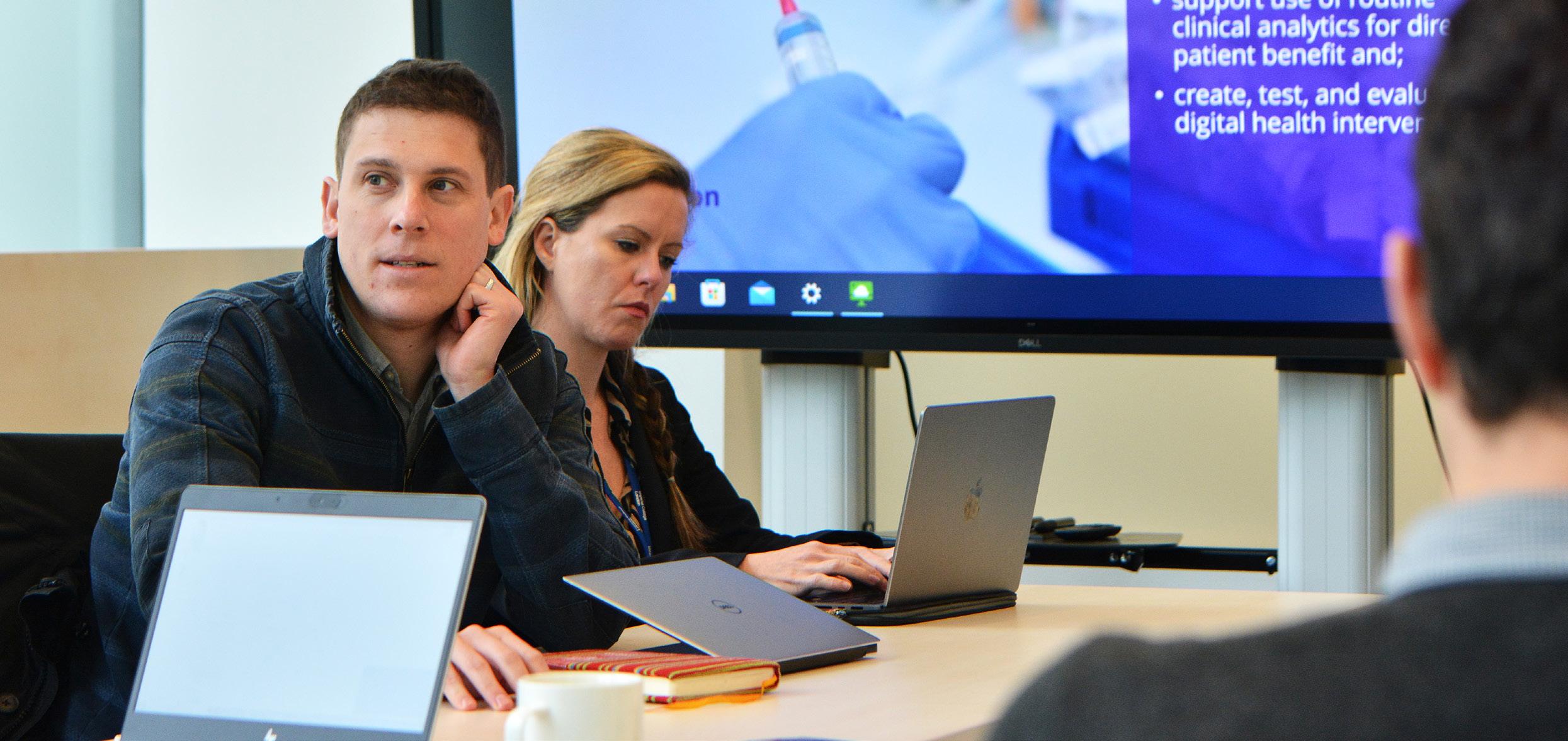
3 minute read
Boosting health data-enabled research
from Health Business 23.3
by PSI Media
Dr Erik Mayer, director of the Digital Collaboration Space, on how this newly opened space in Paddington will play a vital role in boosting health data-enabled research
Health data routinely collected by the NHS is well understood to be a valuable asset for driving innovation in medical research and improving patient care. Ultimately, harnessing its power will not only transform our nation’s health but help shape the future of the NHS. While there is an increasing demand for health data-enabled research, there are longstanding barriers that are preventing researchers, clinicians and industry from realising its full potential. A key challenge is how to navigate the fragmented NHS data sets available and at a speed that helps us rapidly to translate research into better care.
At Imperial College Healthcare NHS Trust, we recently opened our Digital Collaboration Space – a dedicated facility for translating data-driven insights into person-centred care, while addressing the current challenges of dataenabled research. The space, next to St Mary’s Hospital in Paddington, houses our growing digital health team from the National Institute for Health and Care Research (NIHR) Imperial Biomedical Research Centre, a partnership between the Trust and Imperial College London. This is the first new initiative within the Trust’s Paddington Life Sciences development. The vision for this new life sciences cluster is to improve health and reduce inequalities by connecting communities, healthcare, research and industry, centred around St Mary’s Hospital, to deliver health innovation and social and economic value. Through our new Digital Collaboration Space, we want to build awareness and understanding of the power of data to improve health and healthcare, bringing in additional funds and ideas to create even more benefits for patients in north west London. As a team, we provide state-of-theart analysis of the huge amount of health data routinely collected across Imperial College Healthcare’s five hospitals and collaborate with the wider North West London Integrated Care System on a complementary data set from a diverse population of 2.4 million people. Our digital health team provide secure and managed access to de-identified NHS data for industry and academic partners. Access to the data is carefully governed and is only granted for research that has a direct public health or care benefit. E


F Real-world evidence
Our Trust has a long track record in research and innovation, and we undertake hundreds of clinical trials and gather data from well over a million patient contacts each year. But simply holding data isn’t enough to drive research. Our specialist data scientists curate and organise these complex, mixed data sets to answer research questions as effectively as possible. This offers a great advantage as using real-world evidence from clinical settings ensures our research has direct relevance to the health needs of our diverse communities. We can also tap into the extensive clinical research trial capacity of the North West London Clinical Research Alliance, within which our Trust has the highest patient recruitment to research trials.
We can also build an understanding of how clinical staff use new digital tools, which is important for testing and evaluating their effectiveness. For example, a recent study using real-world clinical data from more than 250,000 patients admitted to hospital with a suspected heart attack found that a simple blood test measuring levels of a protein linked to inflammation would better identify those at high risk of dying within three years, opening the door to more targeted treatment for heart attack patients. Our team also demonstrated that they can provide population health data monitoring across the 2.4 million north west London citizens in close to real-time, with the potential to improve diagnosis of conditions.
Public support for data use
All of this is dependent on the public’s confidence that their personal data is protected. This is why we only use completely anonymised data within our secure data environment, iCARE, and work closely with patient groups on scrutinising research projects. We also collaborate closely with patient groups to ensure we’re responding to the most pressing local health needs, such as respiratory disease, infection, pregnancy and premature births, and cancer. Public support for use of healthcare data is strengthened when people see the benefits of its use, as happened in the pandemic when routine de-identified healthcare data was used at scale to answer research questions and led to new treatment options for patients.
Embedded in the community
Our location in Paddington, close to St Mary’s Hospital, means we are well-placed to encourage and host research collaborations between clinicians, academics, data scientists and partners from industry and local communities. St Mary’s is local to communities in north Westminster, north Kensington and south Brent, which are among the most deprived areas in the country and where over half the population come from a Black, Asian or minority ethnic background. These communities have significant disparities in health outcomes and life expectancy. There is a 14-year life expectancy gap between Westminster’s most and least deprived. The new Digital Collaboration Space, and Paddington Life Sciences more widely, will enable us to improve not just healthcare but also wider health and wellbeing. Our focus on social and economic value and inclusion is critical for meeting local needs, making our clinical research relevant, and inspiring our clinical and research staff. And with our local partners, including life sciences and technology businesses already located in Paddington, we are already working on wider initiatives to increase access to healthcare and clinical research, skills and job creation, and digital inclusion. We will ensure that data-driven insights and digital innovation are at the heart of our work, connecting communities to a future of better health. L www.imperial.nhs.uk/paddington-life-sciences











